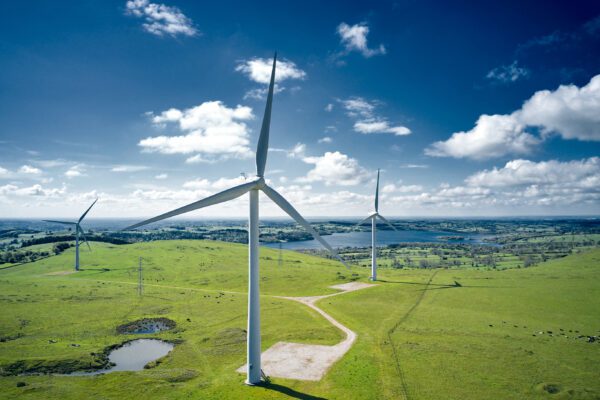
Here’s what you need to know about the UK Climate Change Risk Assessment
The third Climate Change Risk Assessment (CCRA3), which assesses climate-related risks and opportunities, now and in the future, has recently been published by the government.
Eight high-level risk areas that could each cost the UK economy more than £1 billion per year by 2050, if left unchecked, have been prioritised for action over the next two years. The third Climate Change Risk Assessment (CCRA3), which assesses climate-related risks and opportunities, now and in the future, has recently been published by the government. Anthony Armitage, our Environmental Consultant, Regulated Services, talks about what you need to know about the UK Climate Change Risk Assessment.
What are the 8 high-level risk areas?
The risk assessment considers 61 UK-wide climate risks and opportunities cutting across multiple sectors of the economy.
The eight prioritised risks areas are:
- Risks to the viability and diversity of terrestrial and freshwater habitats and species from multiple hazards.
- Risks to soil health from increased flooding and drought.
- Risks to natural carbon stores and sequestration from multiple hazards.
- Risks to crops, livestock and commercial trees from multiple climate hazards.
- Risks to supply of food, goods and vital services due to climate-related collapse of supply chains and distribution networks.
- Risks to people and the economy from climate-related failure of the power system.
- Risks to human health, wellbeing and productivity from increased exposure to heat in homes and other buildings.
- Multiple risks to the UK from climate change impacts overseas.
At least four of these (supply chains, people’s health, power failure and geopolitical impacts) will have a direct or indirect impact on every business. All the risks will affect all of society in some way.
How is the UK government addressing the risks?
The government and devolved administrations have and will be making high-level investments to tackle the above risks. Robust collaborations with local authorities and the private and voluntary sectors are critical in addressing the scale of the challenges we face as a society.
Businesses are mandated or are under increasing pressure to report on their plans to reduce carbon emissions and improve their environmental and social sustainability. However, most of these plans focus on climate change mitigation actions.
What part do UK businesses play?
Businesses must invest time and energy now to determine how they will become climate-resilient and adaptable organisations to prepare for these new high-level risks.
As a minimum, climate change impacts should be incorporated into your strategic risk register.
How can your business prepare?
Fundamental questions need to be addressed within your business at a c-suite level, to prepare your organisation for impacts of climate change, such as:
- Will your buildings/offices withstand higher summer temperatures?
- How vulnerable are your buildings and workforce to flooding events?
- What energy security actions will you take to ensure your buildings and operations are not affected by system-wide power failures?
- How will reduced access to fresh water affect your ability to operate?
- In view of predicted climate impacts, will your current product(s) or service(s) still be needed in the future? What changes to your offering are needed to ensure future-proofed financial sustainability?
Organisations are currently seeing the supply chain impacts from a volatile energy market, as well as board-level and consumer pressure to examine their supply chains, determine where climate vulnerabilities exist and plan how to mitigate these risks, especially in relation to imports. A domino effect of supply chain impacts is likely, with many indirectly impacted by climate change. This is not just about imported goods or services either; the UK’s farming and forestry sectors are forecast to take the brunt of climate change impacts, with significant disruptions to production.
Alongside climate change adaptation planning, sustainable procurement practices provide an additional focus to make your supply chain more resilient and ethical. Ensuring suppliers meet high social and environmental standards not only has direct benefits in the communities they operate in, but also helps the transition to a circular economy and demonstrates good corporate governance.
The Chartered Institute of Procurement and Supply released their ‘Ethical and Sustainable Procurement’ guidebook which introduces the concept of ethical procurement within business, giving a breakdown of the key aspects involved.
Once familiar with the principles of sustainable procurement, businesses can formalise their approach using . This standard provides robust methodologies that appraise supply chains, set sustainability criteria and priorities, and inform ‘climate-ready’ purchasing behaviours. This approach can give a clear picture of the weaknesses and strengths of the supply chain, highlighting where value is created or lost, and can be aligned with climate change impacts, now and in the future.
Your business’ journey to net-zero
Taking a direct approach to improve the UK’s resilience to climate change could be part of your journey to net-zero. Once you have made significant energy and resource improvements, with a corresponding reduction in emissions, it is likely you will have ‘residual’ emissions.
Any residual emissions will need to be ‘offset’ or sequestered (after substantial effort has been made to reduce emissions) to achieve net-zero. Offsetting generally refers to the purchase of carbon credits, which in turn, mainly fund renewable energy projects or forestry programmes overseas.
However, in line with CCRA3’s priorities, peatlands and woodlands in the UK are in sharp focus. Peatlands are being improved to retain stored carbon and to improve the sequestration of carbon dioxide (absorption and ‘locking in’ of carbon dioxide into the peat), and woodlands are being improved or created to sequester carbon and improve biodiversity.
The UK Woodland Carbon Code and Peatland Code are UK-based programmes where businesses supporting either scheme through the purchase of validated and verified carbon credits can directly improve habitat restoration, soil quality, biodiversity and above all, the carbon sequestration potential of the UK.
Embedding climate-resilient thinking is critical for future business planning and may give rise to innovations, new opportunities, and markets. Being able to pre-empt climate impacts will provide a competitive advantage and keep you ahead of the curve.
Inspired can support your business’s Climate change adaptation journey as a trusted sustainability partner. If you’d like to know more about how we can help you reduce emissions and improve your sustainability, as well as develop climate change adaptation and sustainable procurement plans for your organisation, please get in touch on 01772 689 250 or email at [email protected].










